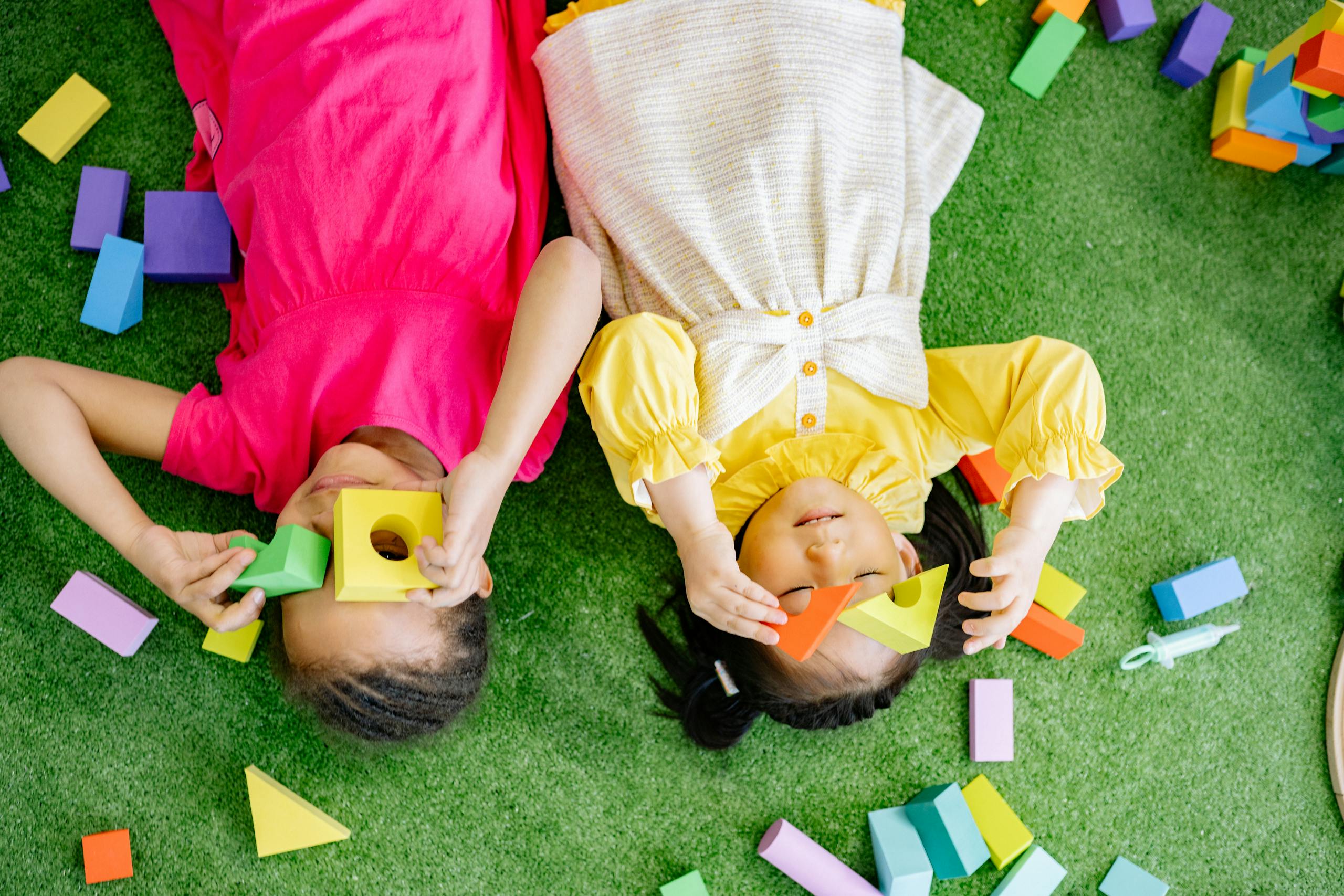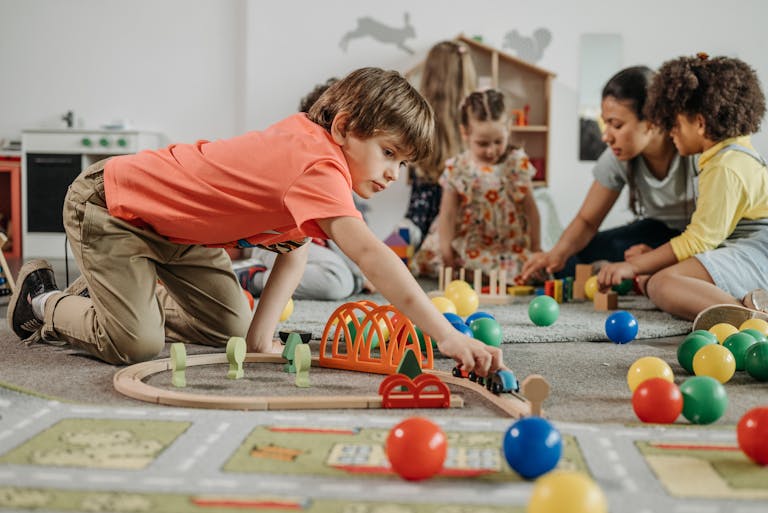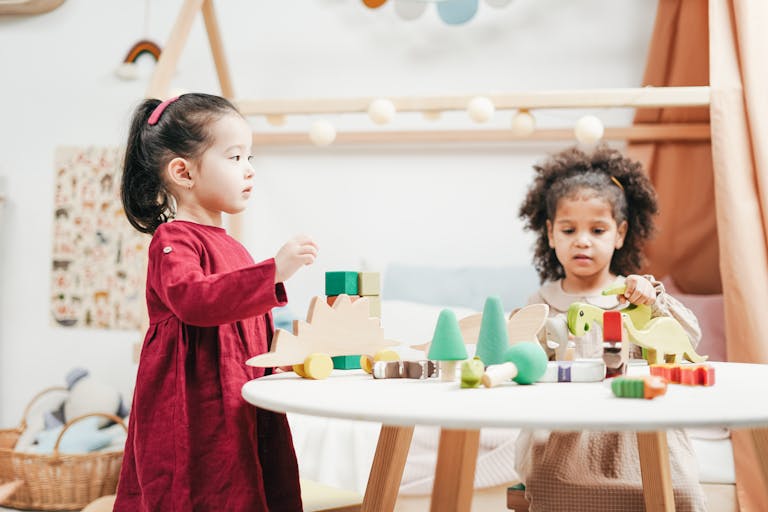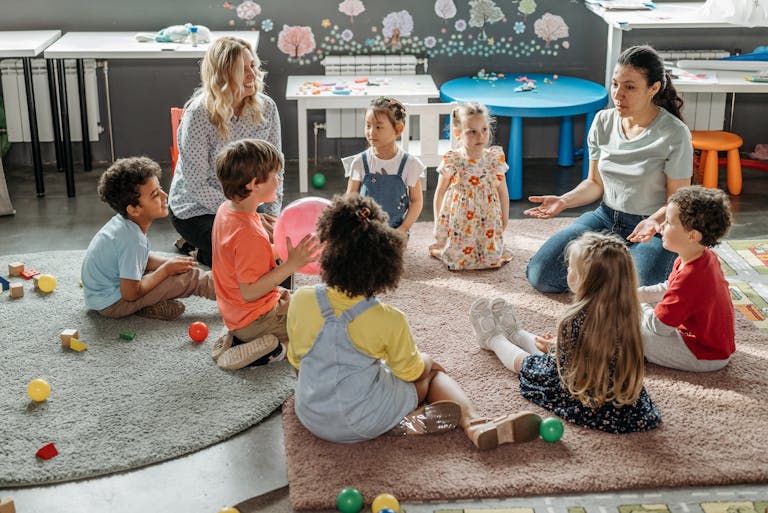It’s 3 PM on a Tuesday, your little one just declared they’re “bored to death” (dramatic much?), and you’re staring at a pile of educational worksheets that might as well be written in ancient hieroglyphics for all the enthusiasm they’re generating. Sound familiar?
Here’s the thing about kids—they’re basically tiny learning sponges, but only when they don’t realize they’re being squeezed. The moment learning feels like “work,” those little brains seem to develop an impressive ability to become suddenly fascinated by absolutely anything else. The dust bunny under the couch? Riveting. That random button on their shirt? Pure entertainment gold.
But what if we told you that some of the most effective educational moments happen when kids think they’re just having a blast? The secret isn’t finding time for education between play—it’s making play the education. These 8 games transform learning into laughter, covering everything from colors and numbers to letters and problem-solving skills.
The best part? Most of these activities require nothing more than what you already have lying around your house. No fancy educational kits, no screen time guilt, just good old-fashioned fun that happens to be secretly brilliant. Platforms like Poki Kids offer a safe place where children can explore and play a wide variety of fun and educational games, giving families access to a selection that offers both entertainment and learning.
Why Educational Games Are Every Parent’s Secret Weapon
Let’s get real for a second—children are naturally wired to learn through play. It’s not just what they prefer; it’s literally how their brains are designed to absorb information. When kids are engaged and having fun, their brains release chemicals that enhance memory formation and retention. It’s like nature’s own educational hack.
Traditional learning methods often create pressure and anxiety, which actually block effective learning. But games? Games create a safe space where mistakes become funny moments rather than failures. Playing with friends makes learning even more engaging and helps children develop important social skills like teamwork and cooperation. Your child might not remember that worksheet about counting, but they’ll definitely remember the time they “counted” all the cookies before mysteriously eating half the evidence.
Research shows that children retain up to 90% of what they learn through active participation and play, compared to just 10% of what they learn from traditional lecture-style teaching. That’s not just a win for your child’s education—it’s a win for your sanity too.
Games for Colors & Shapes (Ages 2-5)
Color Scavenger Hunt
Transform your home into an exciting treasure zone with this simple color-hunting adventure. Call out a color and watch your little explorer race around finding matching items. “Find something red!” might lead to apples, toy trucks, or that lipstick you’ve been looking for.
Start with basic colors for younger children, then level up with challenges like “Find something burgundy” or “Bring me two things that are the same shade of blue.” Pro tip: Set a timer to add excitement—nothing makes toddlers move faster than a good countdown.
Sarah from our parent community shares: “My 3-year-old now knows the difference between ‘green’ and ‘forest green’ thanks to our daily color hunts. Who knew my living room could be such an effective classroom?”
Shape Detective Adventure
Turn your child into a geometric genius by sending them on shape-spotting missions around the house. Circles hiding in clocks, rectangles disguised as windows, triangles masquerading as pizza slices—shapes are everywhere once you start looking.
Create “detective badges” (just construction paper and imagination) and give them a “case” to solve: “Detective, we need you to find five circles in the kitchen!” As they advance, introduce more complex shapes and combinations.
Safety note for the younger detectives: Establish “safe zones” and remind them that some shapes (like electrical outlets) are for looking, not touching.
Number & Math Games (Ages 3-8)
Kitchen Counter Math
Your kitchen is basically a math playground waiting to happen. Cooking becomes counting when you ask your sous chef to help measure ingredients. “Can you count out 12 chocolate chips?” (Don’t worry, we won’t tell if a few go missing during the counting process.)
This game naturally introduces concepts like more and less, addition and subtraction, and even early fractions. “We need half a cup of flour—can you help me figure out what half means?” Suddenly, your child is learning division while making cookies.
Adapt for different ages: Toddlers can count ingredients, preschoolers can do simple addition (“If we add three more carrots, how many will we have?”), and school-age kids can handle basic multiplication and measurement conversions.
Number Hopscotch
Take the classic hopscotch game and give it a mathematical makeover. Instead of just hopping through numbered squares, create challenges: “Hop to the number that comes after 7” or “Land on the number that equals 2+3.”
Rainy day? No problem. Use painter’s tape to create an indoor hopscotch court on your hallway floor. You can even make themed versions—skip count by 2s, 5s, or 10s for kids working on multiplication concepts.
For families with kids at different skill levels, create multiple “tracks” with varying difficulty levels. Everyone plays together, but each child faces age-appropriate challenges.
Letter & Reading Games (Ages 4-7)
Alphabet Treasure Maps
Channel your inner pirate and create treasure hunts that lead to letters instead of gold. Hide letter cards around your house (or yard) and create simple maps with picture clues. “Look under something you sleep on” might lead to the letter B under their bed.
Start with letter recognition, then progress to word building. Once they’ve found all the letters for C-A-T, they get to discover what the treasure word spells. The real treasure? Watching their face light up when they decode their first word.
Creative hiding spots that won’t drive you crazy: inside books, taped under tables, in toy boxes, or even in the refrigerator (kids love checking the fridge anyway).
Storytelling Dice
Create or buy dice with pictures, letters, or simple words on each side. Roll the dice and build stories together using whatever comes up. “Once upon a time, there was a purple elephant who loved to eat pizza…” The sillier, the better.
This game builds vocabulary, encourages creativity, and teaches story structure without feeling like a writing lesson. Kids naturally learn about beginnings, middles, and ends while giggling about ridiculous character combinations.
Example story starter from a recent game: “The dancing dinosaur discovered a magical doorway that led to a land made entirely of marshmallows.” Your child’s imagination will take it from there, and you might be surprised by their creative plot twists.
Multi-Skill Challenge Games (Ages 5-10)
DIY Board Game Creation
Help your child design their own board game from scratch. This project incorporates math (creating rules and scoring systems), art (designing the board and puzzle pieces), reading and writing (instructions and cards), and critical thinking (problem-solving and strategy).
Start with simple concepts: a path from start to finish with challenges along the way. They might create “Math Mountain” where players solve problems to advance, or “Reading Rainbow Road” where landing on certain spaces means reading a card aloud.
The confidence boost kids get from creating something entirely their own is incredible. Plus, you’ll have a custom family game that reflects your child’s interests and personality.
Family Learning Olympics
Set up a series of educational “events” for a family game day that celebrates learning in all its forms. Create stations for different skills: a math relay race, spelling bee competitions, geography challenges, or science experiments.
Design a scoring system that celebrates effort and improvement rather than just getting answers right. Award points for creativity, teamwork, good sportsmanship, and trying something new.
Meet the Beloved Characters Making Learning Fun
Incorporating familiar and beloved characters into educational games can make learning even more engaging for children. Shows and platforms developed by trusted creators feature characters like PAW Patrol, Elmo, Dora, and Wild Kratts, creating a safe and fun environment where kids can explore new concepts while playing.
PAW Patrol
PAW Patrol features a team of heroic pups led by Ryder, who tackle adventures that teach problem-solving, teamwork, and community responsibility. Kids love joining their favorite pups on rescue missions that sneak in lessons about safety and helping others.
Elmo
Elmo, from Sesame Street, brings warmth and humor to early learning with songs, stories, and activities that focus on literacy, numeracy, and social-emotional skills. His friendly face helps children feel comfortable and excited about learning new things.
Dora the Explorer
Dora the Explorer invites kids on interactive adventures filled with puzzles, language learning, and cultural exploration. Dora’s bilingual approach encourages children to discover new words and phrases while solving challenges.
Wild Kratts
Wild Kratts combines wildlife education with action-packed storytelling as the Kratt brothers explore animal habitats and behaviors. This show inspires curiosity about science and nature, making it a perfect fit for educational games about animals and the environment.
Daniel Tiger
Daniel Tiger, developed by trusted creators, offers engaging stories and songs that teach children important social skills, emotional understanding, and problem-solving. This beloved character helps kids navigate their feelings while having fun.
Trusted Platforms and Developers
Platforms like Nick Jr., developed by industry leaders, offer a variety of games and activities featuring these characters and many others, providing a trusted place where children can play safely while learning. Additionally, sites like Poki Kids offer a wide selection of fun children’s games that include puzzles, science activities, and opportunities to discover new skills.
By integrating these characters and trusted platforms into your child’s playtime, you give them access to a world of fun, safe, and educational experiences that support their growth and development.
Making Every Day a Learning Adventure
The beauty of these fun and educational games lies in their simplicity and flexibility. You don’t need to be a certified teacher or have a playroom that looks like a Pinterest board. You just need curiosity, creativity, and maybe a willingness to find cereal pieces under your couch for the next few weeks.
Learning doesn’t have to feel like pulling teeth (from either you or your child). Some of the most powerful educational moments happen during everyday activities when kids are relaxed, engaged, and—most importantly—having fun.
Start with just one game this week. Maybe it’s a color hunt during breakfast or storytelling dice before bedtime. Pay attention to what captures your child’s interest and build from there. Remember, you’re not just teaching colors, numbers, and letters—you’re showing them that learning can be joyful.
The best part? These games create positive associations with education that will serve your child well beyond their early years. When learning feels like play, curiosity becomes a habit, and that’s a gift that keeps on giving.
Ready to turn your living room into a learning laboratory? Pick one game, gather your little scientists, and prepare for some seriously educational fun.
Don’t forget to share your successes (and hilarious failures) with our parent community—we love hearing about your adventures in sneaky education!






